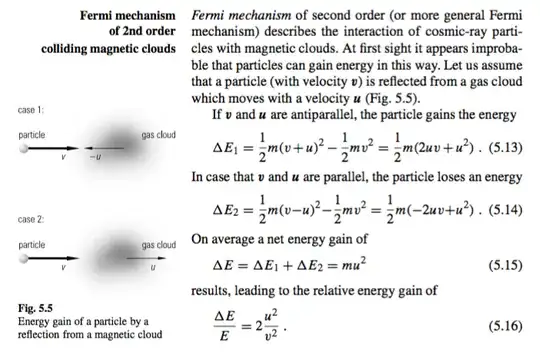The second order Fermi mechanism describes the interaction of charged particles with magnetic clouds. This model leads to a collision-less acceleration of cosmic rays up to ultra high energies.
A rough computation (classical/extreme cases) of this phenomenon is described in the book of Claus Grupen, "Astroparticle physics" on page 68:
My question concerns equation 5.13 & 5.14. In my opinion, the expressions for $\Delta E_1$ & $\Delta E_2$ are wrong.
Indeed, in the frame of the cloud the particle's velocity is equal to $v_{in}=(v+u)$. After the collision it becomes $v_{out}=-(v+u)$
Going back to the lab frame: \begin{equation} v^*_{out}=-(v+u)-u=-v-2u \end{equation}
$\Delta E_1$ then yields: \begin{equation} \Delta E_1=\frac{1}{2}m(v+2u)^2-\frac{1}{2}mv^2 \end{equation}
Similarly, for $\Delta E_2$: \begin{equation} \Delta E_2=\frac{1}{2}m(v-2u)^2-\frac{1}{2}mv^2 \end{equation}
Is there really a mistake or am I doing it wrong?
